What is plein air painting? In French, it’s an expression that literally translates as “fresh air.” The term in art refers to the practice of painting landscapes and scenes outdoors, as opposed to painting from life, sketches or photographs in a studio. But what’s the history behind this artistic style? Let’s find out!
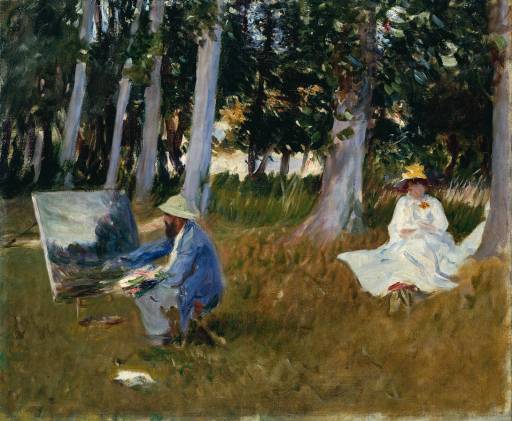
“Claude Monet Painting by the Edge of a Wood” (1885) by John Singer Sargent via Wikimedia Commons
Let’s talk a little about the history of plein air painting
Studio life: painting before plein air
The heyday of plein air style occurred as a part of the impressionist movement (one of my personal favorite movements in art history). But before the French impressionists adopted the use of plein air, artists painted within the confines of their studios. Still life, portraits and landscape paintings alike were all painted indoors after studying and then roughly sketching the scenery outside.
Working inside the studio not only allowed the artist to dedicate numerous hours to capturing the subject in a very detailed manner, but it was also a practice demanded by the tools of the trade available at that time, particularly regarding oil-based paint. You see, up until the invention of the paint tube and industrially created pigments in 1841, artists had to freshly mix their own paint using pigments and oils. By the very nature and portability issues of this medium, the artists were required to stay indoors.
Using other mediums: plein air with pencils and watercolors
One great example of the use of plein air before the invention of paint tubes is the work of artist J.M.W. Turner, who used pencil and watercolors on location to study the landscapes and seascapes that would later grace his canvas.
Below you can see two rough watercolor studies created by Turner. His body of work is predominantly made up of watercolor paintings, some of which he would later develop in oils at the studio.
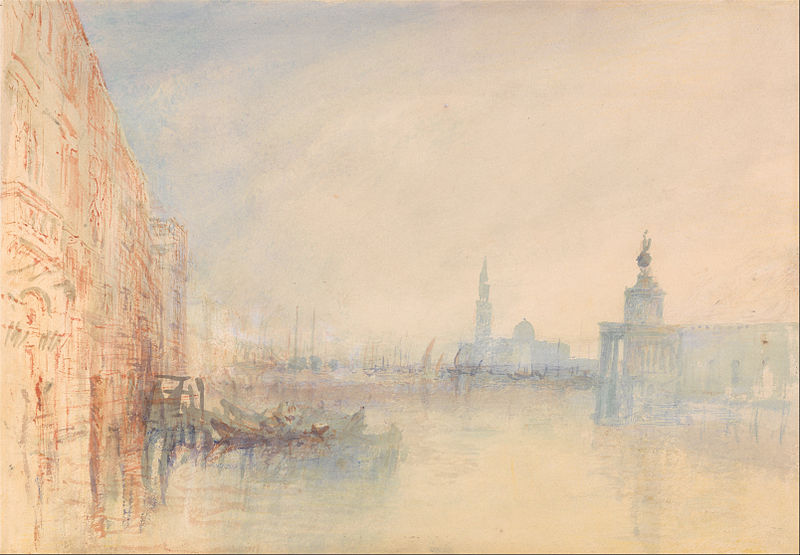
Watercolor sketch “Venice, The Mouth of the Grand Canal” (circa 1840) by William Turner via Wikimedia Commons
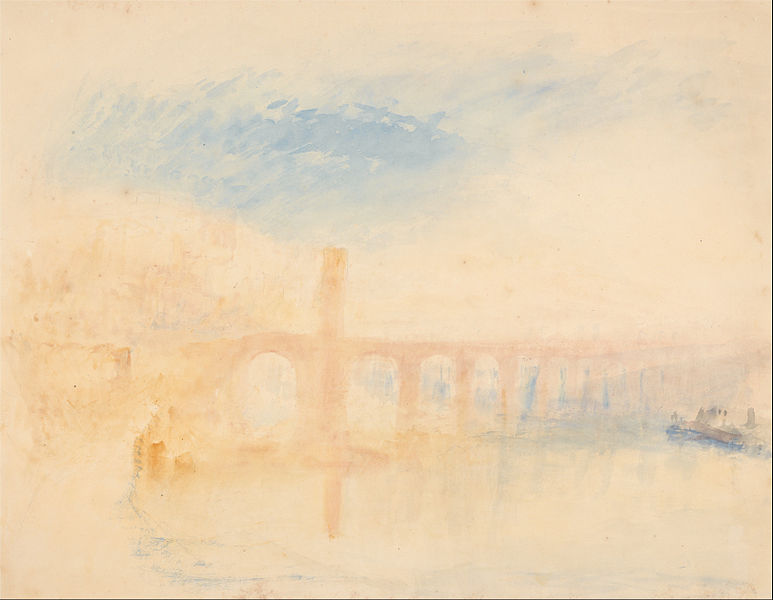
Watercolor sketch, “The Moselle Bridge, Coblenz” (circa 1842) by J.M.W. Turner via Wikimedia Commons
Life outside: the beginning of plein air and impressionism
During the late 1860s, some artists began to stray away from the conventional studio practice that had ruled the art world for centuries and opted to take their work on site. No artists ventured outside not only to create rough sketches but full paintings. Artists like Camille Corot, Pierre-Auguste Renoir and Claude Monet started taking their field easels (also known as portable easels), canvases and paints outdoors to capture the ephemeral effects of sunlight and the feeling of light in the moment.
An important advocate of plein air painting was Monet’s mentor, Eugène Boudin, who introduced him to the practice of painting out in fresh air and to the wonders of bright hues and loose brushwork.
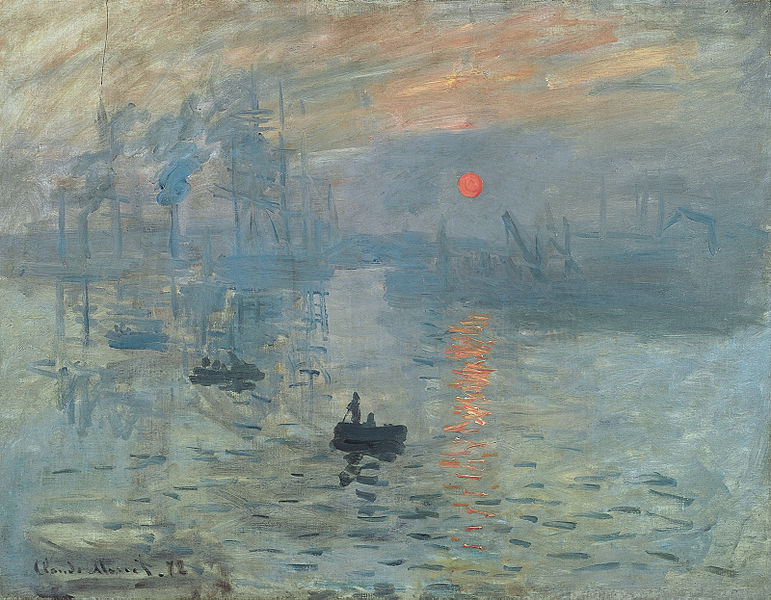
“Impression, Soleil Levant” by Claude Monet via Wikimedia Commons
[box type=”shadow”]
As you can see, color is a crucial part of both plein air painting and impressionism. You can learn more about mixing colors and how to create the fascinating impressionist palette in the Bluprint class Master Palettes: Exploring Color Mixing.
[/box]
Going global: the spread of the plein air style
By this time, the stunning region of Fontainebleau in France had become a very popular site for plein air painting. It’s beauty has been immortalized on canvas by many of the great French painters.
Then, during the early 20th century, plein air painting began to spread to other parts of the world. In Russia, for example, artists like Konstantin Korovin and Vasily Polenov adopted the practice and are now renowned for using this technique.
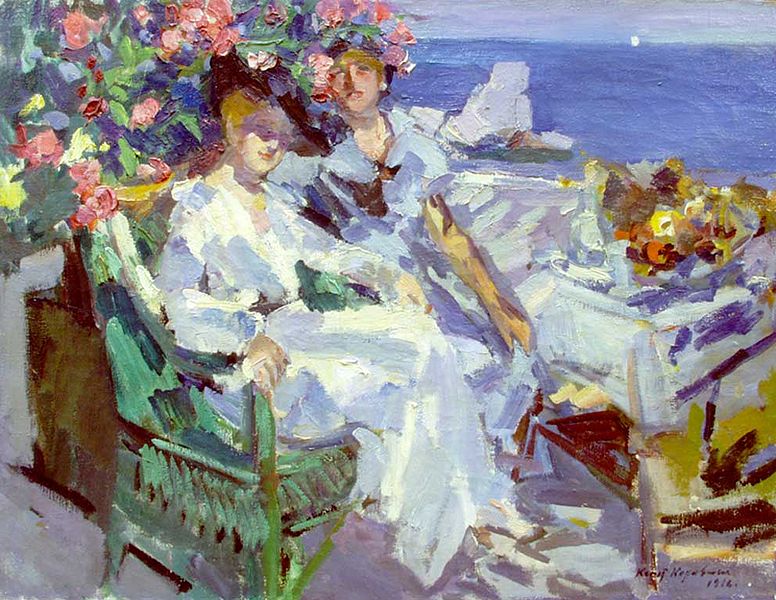
“On Terrace” by Konstantin Korovin via Wikimedia Commons
Plein air painting today
Plein air painting has remained popular throughout the past two centuries and continues to be both challenging and enjoyable for most artists.
If you don’t usually work outside, plein air painting is a great way to get out of the studio, enjoy some fresh air and gain a new perspective while capturing your surroundings in natural sunlight. Even better, you can get together with friends, plan a painting trip somewhere you’ve never been before, and make a great day out of it.
[box type=”shadow”]
Do you want to read more about impressionist techniques and plein air painting? Check out our post on impressionist techniques you can try yourself.
[/box]

Share tips, start a discussion or ask one of our experts or other students a question.
No Responses to “Outdoor Education: What Is Plein Air Painting?”